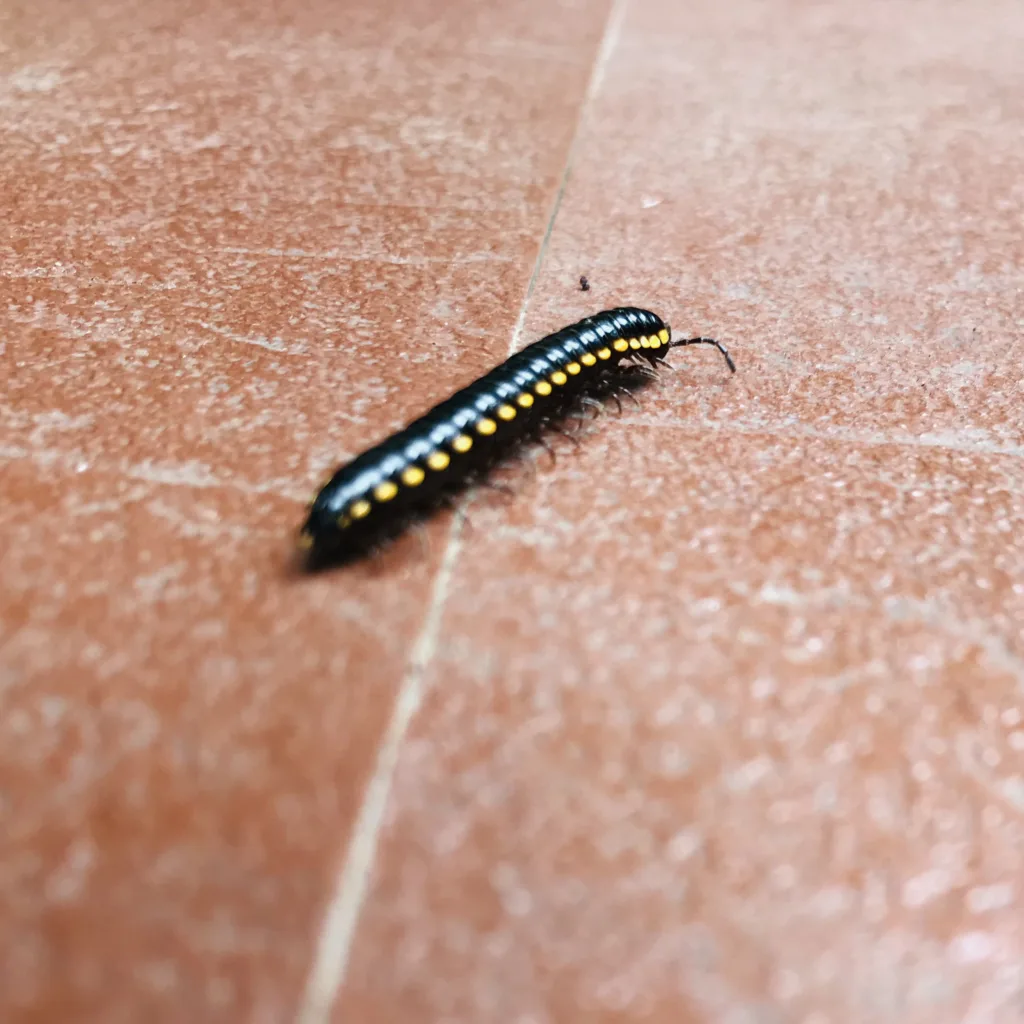Thousand leggers, also known as house centipedes, are arthropods that are commonly found in homes and commercial buildings. These creatures have long, flattened bodies and are known for their numerous legs, which can range from 30 to 354. Despite their intimidating appearance, thousand leggers are generally harmless to humans.
Thousand leggers are typically found in cool, dark, damp places that are rarely disturbed. They are attracted to moisture and can often be found near food sources. Some common hiding spots include cement block walls, boxes, clutter on the floor, floor drains, on or near plants, leaky faucets, leaking hoses, and broken gutters.
While thousand leggers are not harmful to humans, they do have venom that they use to stun their prey. However, bites to humans are rare and uually only result in a small amount of localized pain and swelling at the site.
If you do find a thousand legger in your home, it is best to leave it alone. These creatures are actually beneficial, as they prey on other insects and pests that can be harmful to your home or health.
Prevention is key when it comes to keeping thousand leggers out of your home. Keep your home clean and free of clutter, fix any leaks or moisture issues, and seal up any cracks or openings that could serve as entry points for these creatures.
While thousand leggers may be scary to spot in your home, they are generally harmless and can even be beneficial as they prey on other pests. By taking preventative measures, you can keep these creatures out of your home and enjoy a pest-free living space.
Why Do I Have Thousand Leggers In My House?
House centipedes, also known as thousand leggers, are common household pests that are attracted to cool, dark, and damp areas. They are often found under large rocks, wood piles, and in compost. These areas provide the ideal environment for centipedes to thrive and reproduce.
Centipedes can also find teir way into homes during harsh weather conditions or when searching for food. They are nocturnal creatures and are attracted to light sources. This can lead them to enter homes through cracks and crevices in the walls or foundation.
Once inside, they will continue to seek out dark, cool areas such as basements, bathrooms, and crawl spaces. They are not harmful to humans, but their presence can be unsettling for some people.
To prevent centipedes from entering your home, it is important to seal all cracks and crevices in the walls and foundation. Ensure that all doors and windows are properly sealed and that all screens are in good condition. Keep your home dry and well-ventilated to discourage centipedes from taking up residence.
Regularly cleaning and decluttering your home can also help to reduce the likelihood of centipedes finding a suitable hiding spot. If you are still experiencing a centipede infestation, it may be necessary to contact a pest control professional to help eradicate the problem.

Do Thousand Leggers Bite?
Thousand-leggers do have venom which they use to stun their prey. However, bites to humans are rare. In the event that a thousand-legger does bite a human, it is not harmful and will cause a small amount of localized pain and a little swelling at the site. It is important to note that thousand-leggers are not aggressive towards humans and will only bite if they feel threatened or provoked. It is recommended to avoid handling thousand-leggers or disturbing them in their natural habitat to reduce the risk of being bitten.
What Is A Thousand Leggers?
A thousand leggers, also known as house centipedes, are arthropods that belong to the class Chilopoda. Despite their name, they do not actually have a thousand legs, but rather, they have around 15 to 177 pairs of legs depending on the species. These creatures are typically light brown or gray in color and have a long, flat body that can grow up to 1.5 inches in length. They have a unique appearance, with their long, thin legs protruding from their body and their many body segments. House centipedes are found in many regions around the world, including North America, Europe, and Asia. While they are generally considered harmless to humans, they can be a scary sight to find in your home due to their creepy appearance. They feed on other insects, such as spiders, roaches, and ants, making them beneficial to have around in moderation.
What Attracts Centipedes To Your House?
Centipedes are attracted to your house due to several reasons. They prefer cool, dark, and damp areas with high humidity levels. They tend to hide in areas that are rarely disturbed, such as cluttered spaces, boxes, cement block walls, floor drains, and broken gutters. Centipedes are also attracted to moisture and can be found near water sources like leaky faucets, hoses, and even plants that require watering. Additionally, they are attracted to food sources, such as insects and other small arthropods. Therefore, any area with these conditions can beome a breeding ground for centipedes. It is essential to keep your house clean, dry, and well-ventilated to deter them from entering your home.
Conclusion
The thousand legger, or house centipede, is a common arthropod found in many homes and commercial buildings. They are attracted to cool, dark, and damp places, and can often be found near food sources. While their appearance may be intimidating, they are not harmful to humans and their venom is only used to stun their prey. If bitten by a house centipede, the resulting pain and swelling are typically minor. By keeping your home clean and dry, and addressing any moisture or plumbing issues, you can help reduce the likelihood of a thousand legger infestation.
